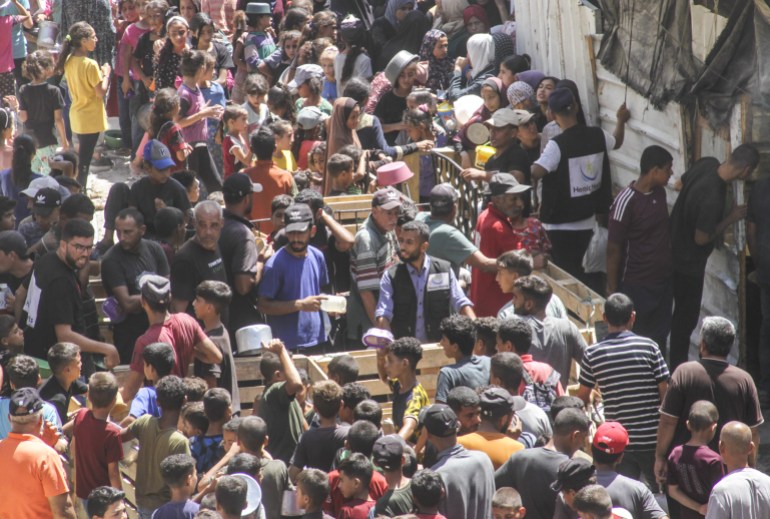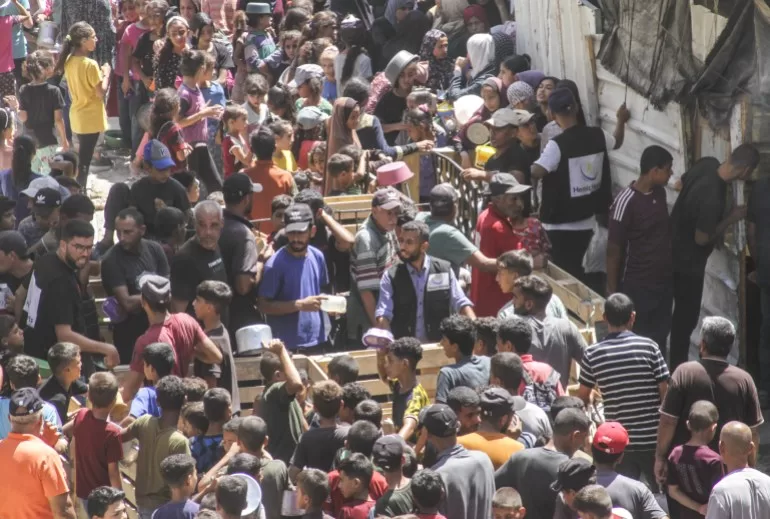There is a “strong likelihood that famine is imminent in areas” of northern Gaza, according to a committee of global food security experts, as Israeli forces press on with a major offensive in the area.
“Immediate action, within days not weeks, is required from all actors who are directly taking part in the conflict, or have influence on its conduct, to avert and alleviate this catastrophic situation,” the independent Famine Review Committee (FRC) said in a rare alert on Friday.
The warning comes just days before a United States deadline for Israel, which started its offensive in the north of the enclave last month, to improve the humanitarian situation in Gaza or face potential restrictions on US military aid.
The United Nations Office for the Coordination of Humanitarian Affairs (OCHA) estimates that there are between 75,000 and 95,000 people still in northern Gaza.
The FRC said it could be “assumed that starvation, malnutrition, and excess mortality due to malnutrition and disease, are rapidly increasing” in north Gaza.
“Famine thresholds may have already been crossed or else will be in the near future,” it said.
‘The unacceptable is confirmed’
The committee reviews findings by the global hunger monitor – an internationally recognised standard known as the Integrated Food Security Phase Classification (IPC).
The IPC defines famine as when at least 20 percent of people in an area are suffering extreme food shortages, with at least 30 percent of children acutely malnourished and two people of 10,000 dying daily from starvation or malnutrition and disease.
The IPC is an initiative involving UN agencies, national governments and aid groups that sets the global standard on measuring food crises.
Cindy McCain, executive director of the UN World Food Programme (WFP), said after the alert was issued: “The unacceptable is confirmed: Famine is likely happening or imminent in north Gaza.”
She posted on social media platform X: “Immediate steps MUST BE TAKEN to allow safe, rapid & unimpeded flow of humanitarian & commercial supplies to prevent an all-out catastrophe. NOW,” she said.
Reporting from Deir el-Balah in central Gaza, Al Jazeera’s Hind Khoudary said northern Gaza has been under a strict siege for more than 30 days, with no food, medicine or water allowed in.
“There has been zero access by any international organisation to deliver food in that area. Beit Lahiya, Beit Hanoon, and Jabalia are still under endless attacks,” she said.
The IPC warned last month that the entire Gaza Strip was at risk of famine, while top UN officials last week described northern Gaza as “apocalyptic” and said everyone there was “at imminent risk of dying from disease, famine and violence”.

US urges increase in aid trucks
The amount of aid entering Gaza has plummeted to its lowest level in a year, according to data from the UN, which has repeatedly accused Israel of hindering and blocking attempts to deliver humanitarian supplies, particularly to the north of the enclave.
Israel’s UN Ambassador Danny Danon last month told the UN Security Council that Hamas was hijacking the assistance – a claim that the group has denied.
The US says Israel must allow a minimum of 350 trucks a day carrying food and other supplies.
In October, 57 trucks a day entered Gaza on average, according to figures from COGAT – the Israeli military body responsible for Palestinian civil affairs, and 81 a day in the first week of November.
The UN puts that number at 37 trucks daily since the beginning of October.
It was an average of 500 trucks daily before the war, said Jean-Martin Bauer, WFP’s director of food security and nutrition analysis.
